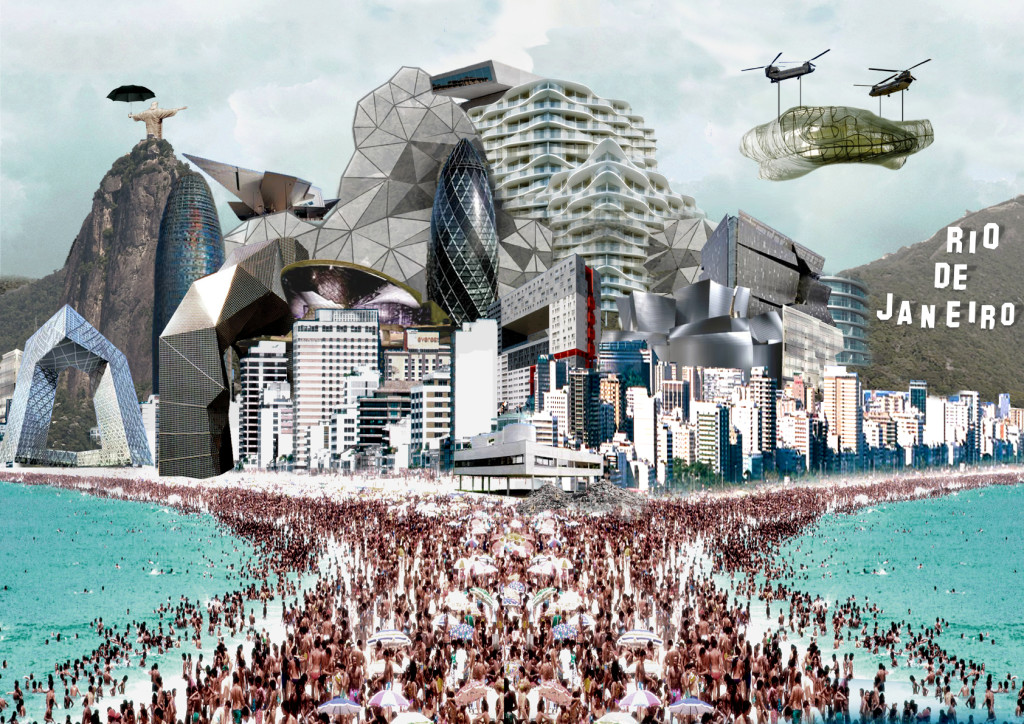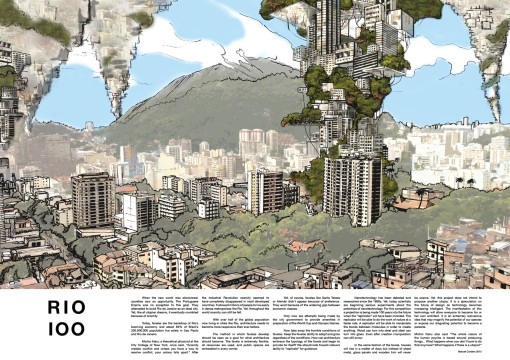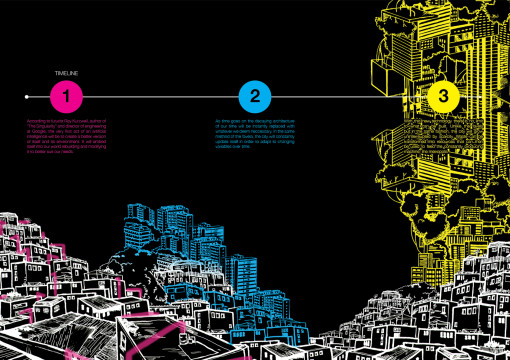Info:
Title: Rio 100 - Code: eede6Contest: Rio de Janeiro / 2013
By: Manuel Cordero
Views: 3549 Likes: 0
Votes:
Alejandro Zaera-Polo 5 Jeffrey Inaba 7 Jeroen Koolhaas 3 Hernan Diaz Alonso 1 Cristiano Toraldo di Francia 7 Pedro Rivera 64.8
Rio 100
When the New World was discovered, societies saw an opportunity. The Portuguese Empire was no exception to this goal. They attempted to build Rio de Janeiro as an ideal city. Yet, like all utopian dreams it eventually crumbled because of scarcity. Today, favelas are the backdrop of Rio’s booming economy and about 84% of Brazil’s 200,000,000 population live solely in Sao Paolo and Rio. Michio Kaku, a theoretical physicist at the City College of New York, once said, “Scarcity creates conflict and unless you have a way to resolve conflict, your colony falls apart.” After the Industrial Revolution scarcity seemed to have completely disappeared in most developed countries. It allowed millions of people to live easily in dense metropolises like Rio. Yet, throughout the world scarcity can still be felt.With over half of the global population now living in cities like Rio, architecture needs to become more responsive than ever before. The method in which favelas develop should be seen as a goal for what architecture should become. The favela is extremely flexible, all resources are used, and public spaces are embedded in every corner. Yet, of course, favelas like Santa Teresa or Alemán didn’t appear because of preference. They exist because of the widening gap between economic classes. Only now are attempts being made by the city government to provide amenities in preparation of the World Cup and Olympic Games. Now take away the horrible conditions of favelas. Keep the favelas ability to adapt and grow regardless of the conditions. How can architecture embrace the typology of the favela and begin to provide for itself? We should look toward nature’s ability to “replicate” for guidance. Nanotechnology has been debated and researched since the 1950s. Yet, today scientists are beginning serious experiments about the potentials of nanotechnology. For this competition a projection of 100 years into the future when the “replicator” will have been invented is being made. The replicator will be able to do the work of nature at a faster rate. A replicator will be able to manipulate the bonds between molecules in order to create anything. Wood can turn into steel and steel can turn into glass. Even after creation manipulation can still occur. In the same fashion of the favela, houses will rise in a matter of days but instead of sheet metal, glass panels and wooden trim will never be scarce. Yet, this project does not intend to propose another utopia. It is a speculation on the future of design as technology becomes increasing intelligent. The manifestation of this technology will allow everyone to become his or her own architect. It is an extremely subversive idea that may magnify the potential of our species or expose our disgusting potential to become a parasite. Michio Kaku also said “The whole nature of the human psyche is based around producing things… What happens when you don’t have to do that anymore? What happens if there is a utopia?”








